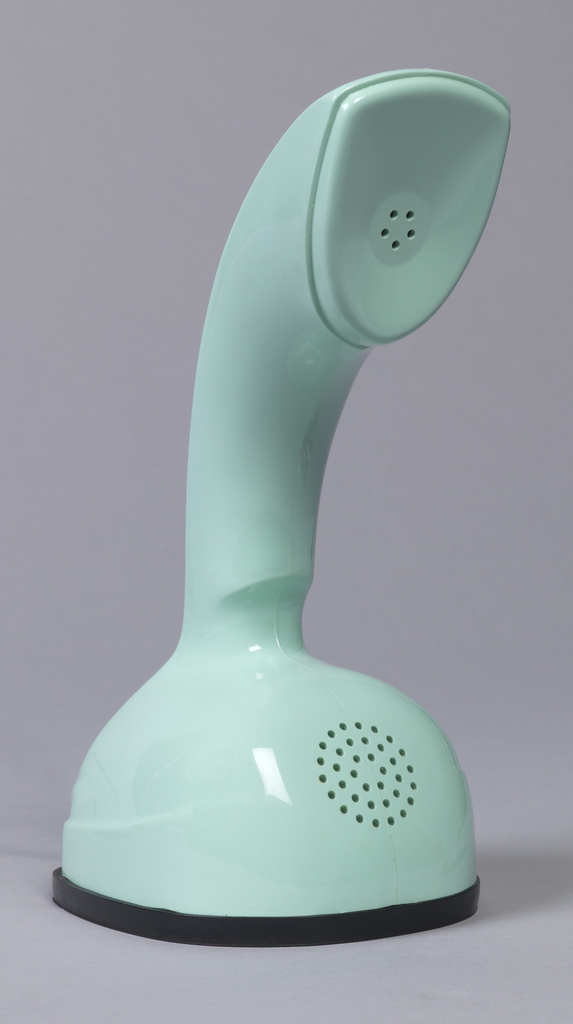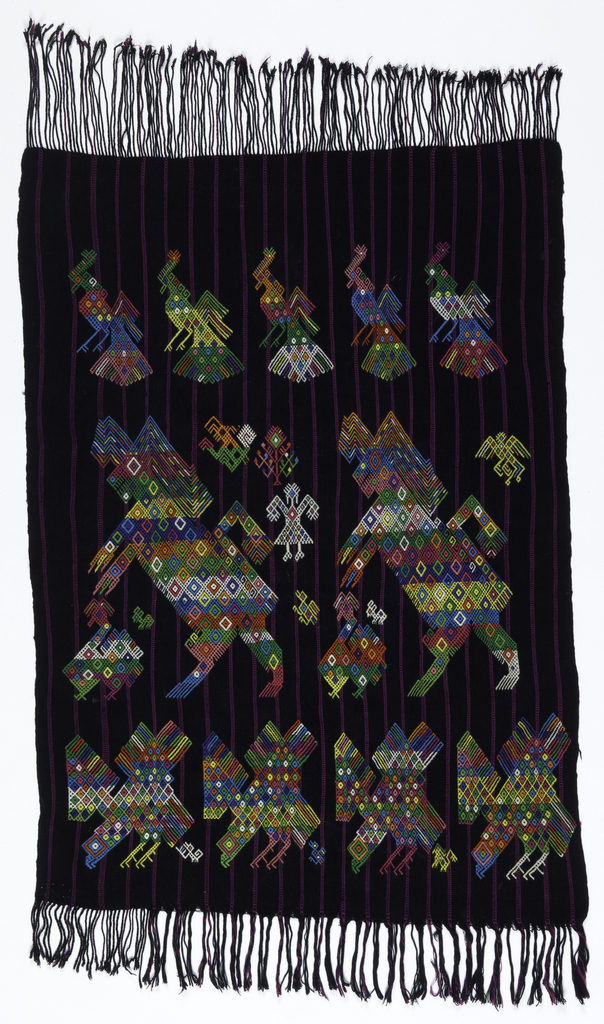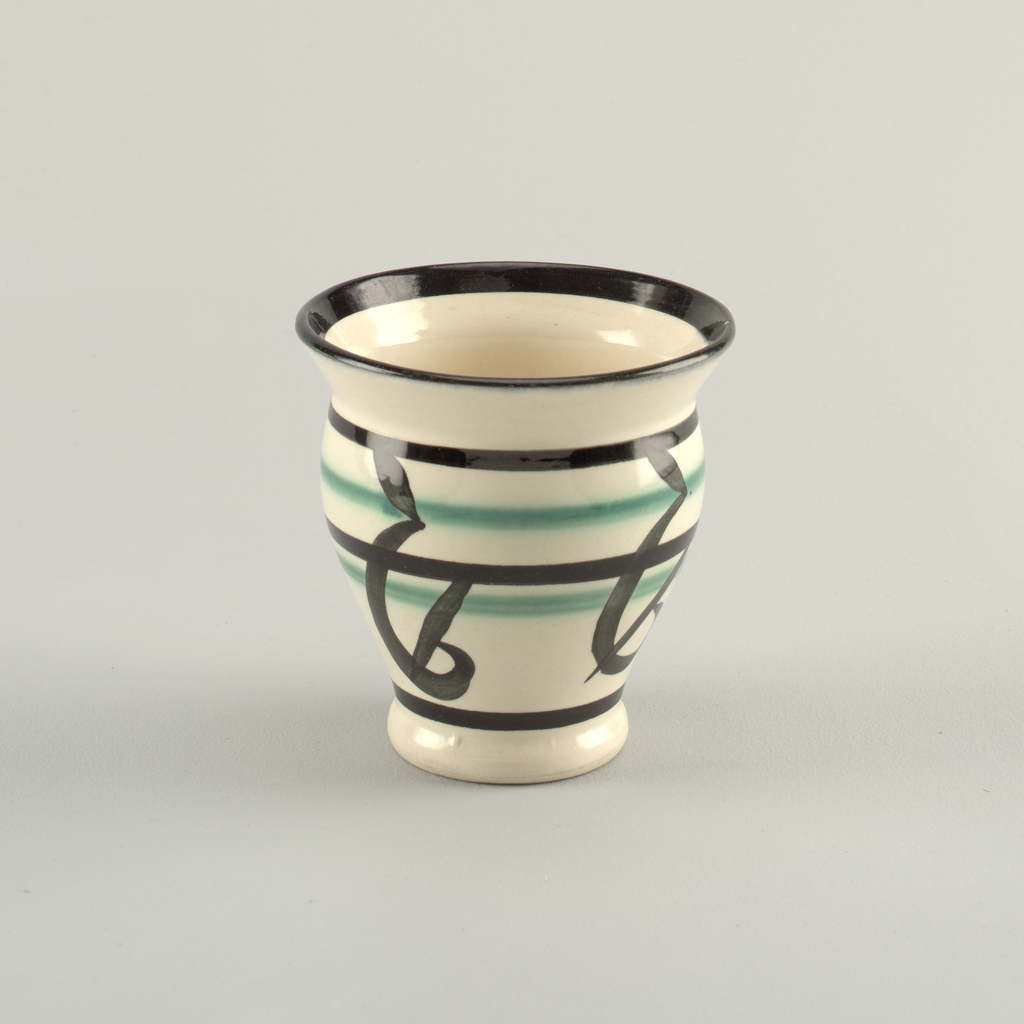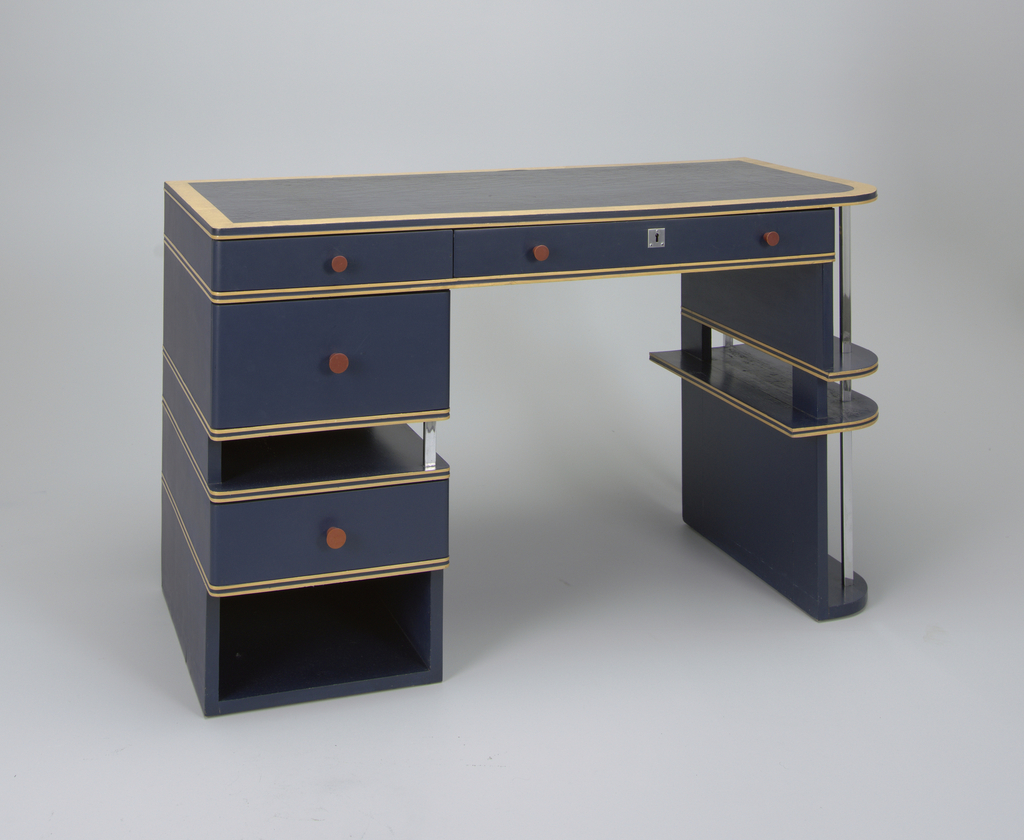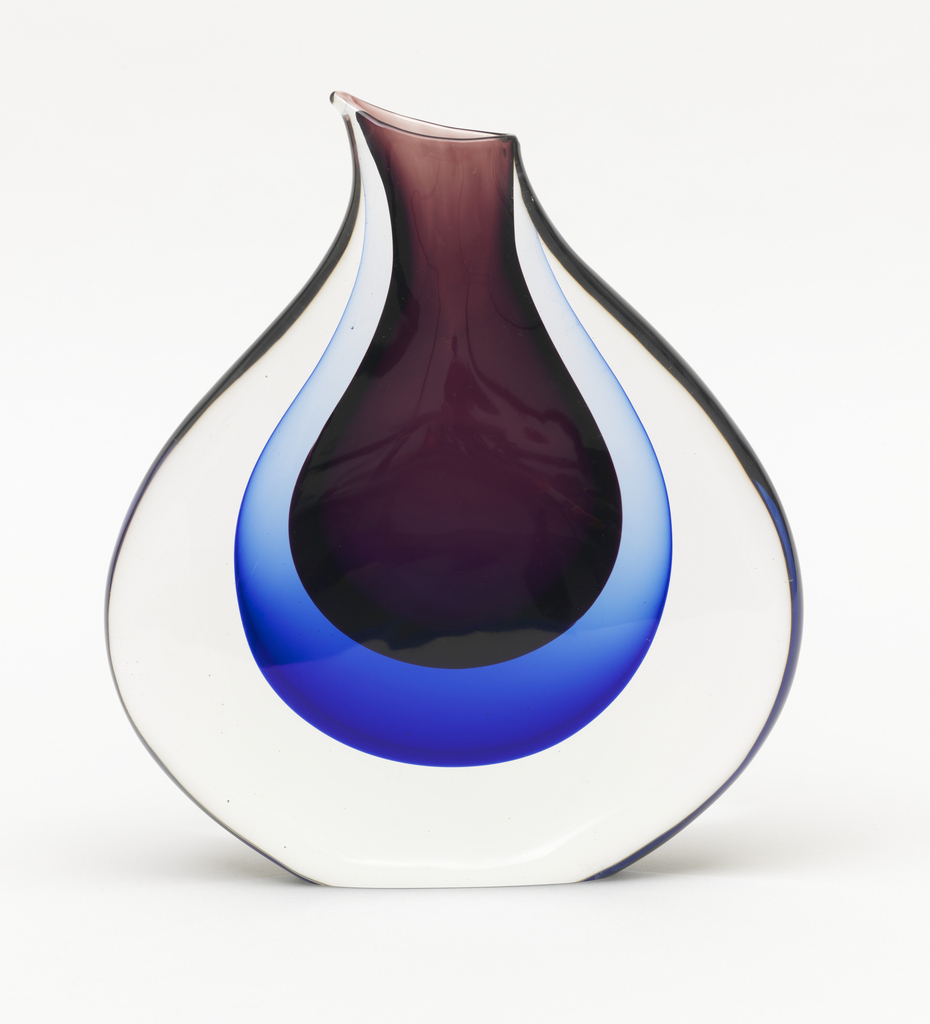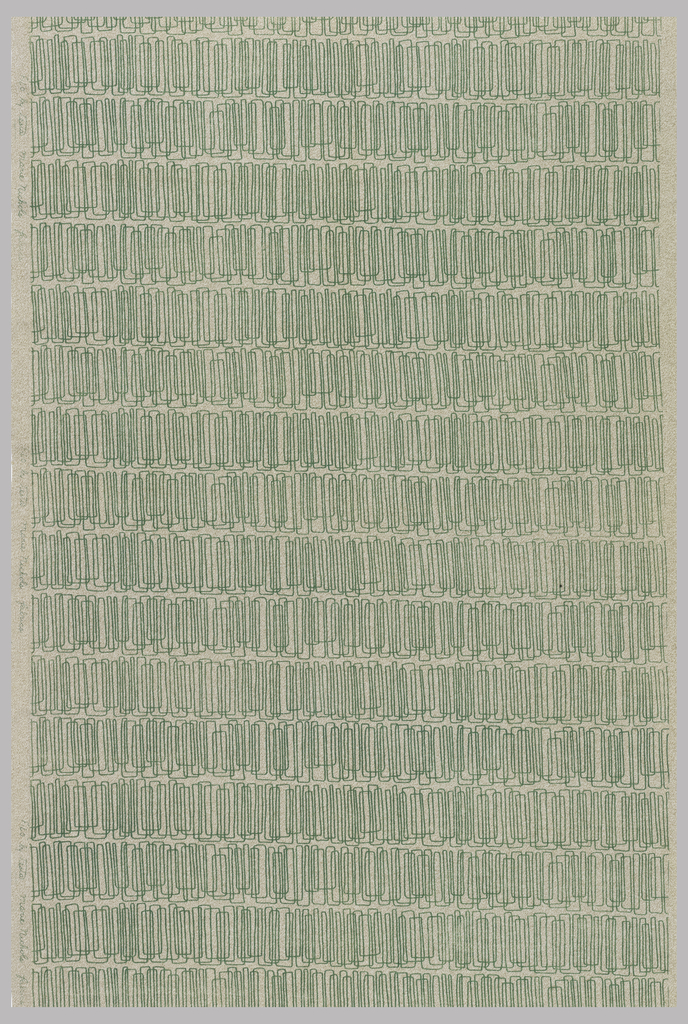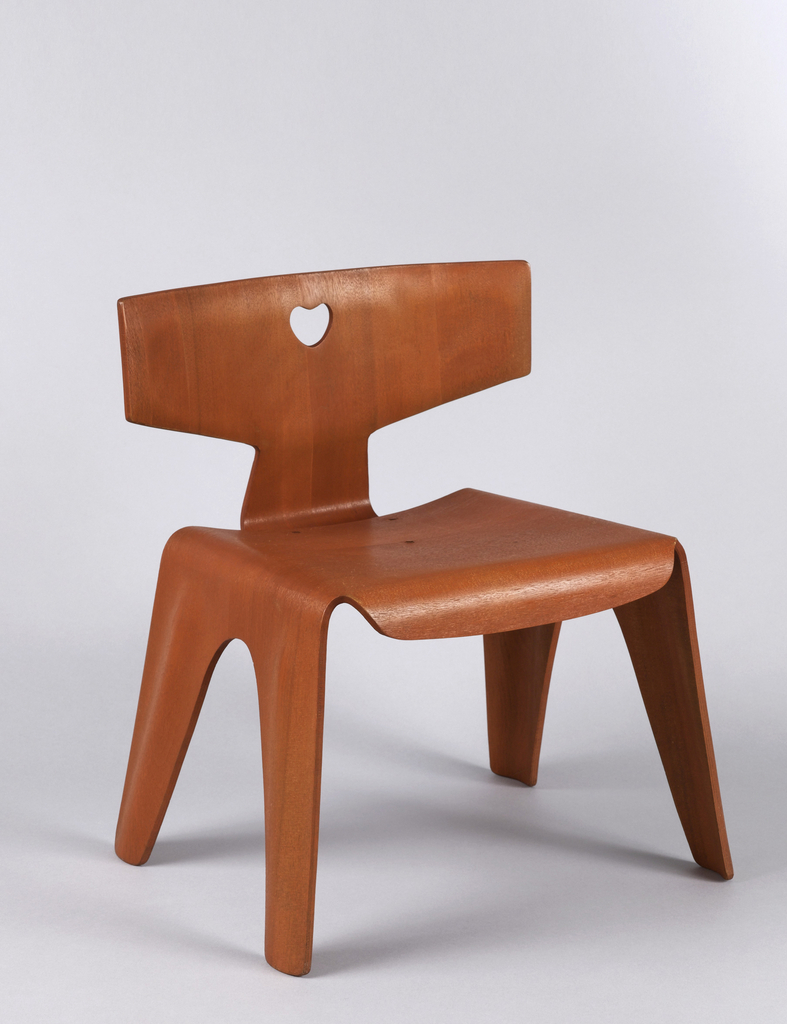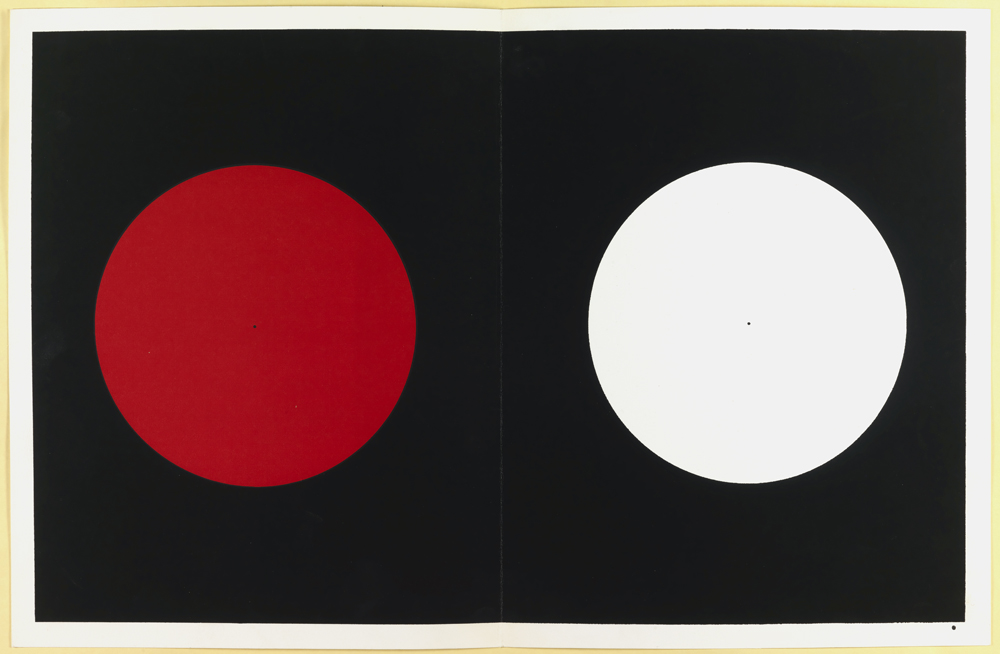There is no questioning the significance to twentieth-century industrial design of the Ericofon telephone, whose one-piece design makes it a predecessor of both cordless telephones and cell phones. Introduced in the United States in 1956, the Ericofon was originally conceived by Ralph Lysell in 1941 and was redesigned by Lysell, Hans Gösta Thames, and Hugo Blomberg for...
You wouldn’t know this is a ceremonial Tzute or headpiece by just looking at it. Utilitarian indeed, one gets lost in its rainbow colors and loom-weaved energy. The anthropomorphic animal imagery shows chickens, peacocks and two horses standing erect, surrounded by more avian shapes and (alas!) a human figure in bird transcendence. Illuminated, obsessed, invoking...
Margarete Heymann-Loebenstein-Marks, also known as Grete Marks, was a German ceramicist and painter who studied at the Bauhaus School of Arts in Weimer in 1920–21, alongside Paul Klee and Georg Muche. Prior to this, she had attended the Kunstgewerbeschule in Cologne and studied painting at the Akademie der bildenden Künste in Düsseldorf. Her time at...
This desk by Paul Frankl is an example of American streamlined furniture of the 1930s. Frankl trained as an architect in Germany and Austria before settling in New York in 1914, as a decorator and designer. He created geometric furniture designs for Frankl Galleries in Manhattan. Frankl’s design philosophy centered on designing for the future,...
Although this vase exemplifies a mid-twentieth century organic style of modernism, it comes from a glass factory with a long tradition of using historical production techniques, located on the island of Murano in Venice, Italy, an important glass-blowing center since the middle ages. In the mid-nineteenth century, Italian lawyer Antonio Salviati developed an interest in glass after...
Although the name may be unfamiliar to some, American textile designer Angelo Testa (American, 1921–1984) made an important contribution to 20th century textile design. As the very first graduate of the Institute of Design in Chicago, Testa was at the vanguard of the “New Bauhaus”, alongside Lazlo Moholy Nagy, Marli Ehrman and George Fred Keck....
Experimenting with the possibilities of molded plywood during World War II allowed influential design couple Charles and Ray Eames to perfect a cheaper alternative to metal leg splints. The lightweight design proved to be a life-saving innovation for wounded soldiers. At the end of the war, the Eamses redirected their improved understanding of molded plywood...
Join us for a discussion with Marimekko designers Aino-Maija Metsola, Mika Piirainen, and Sami Ruotsalainen, as they speak about their approach to design, and the unique vision of the iconic brand. Design by Hand is made possible by the support of Van Cleef & Arpels
Everyone has a favorite color, but how often are our conscious thoughts trained on those inclinations for various tints and hues? Our careless observation of the essentials of design was of paramount importance to Josef Albers, a German artist and color theorist whose lessons at the Bauhaus, Black Mountain College, and Yale focused on overcoming...
